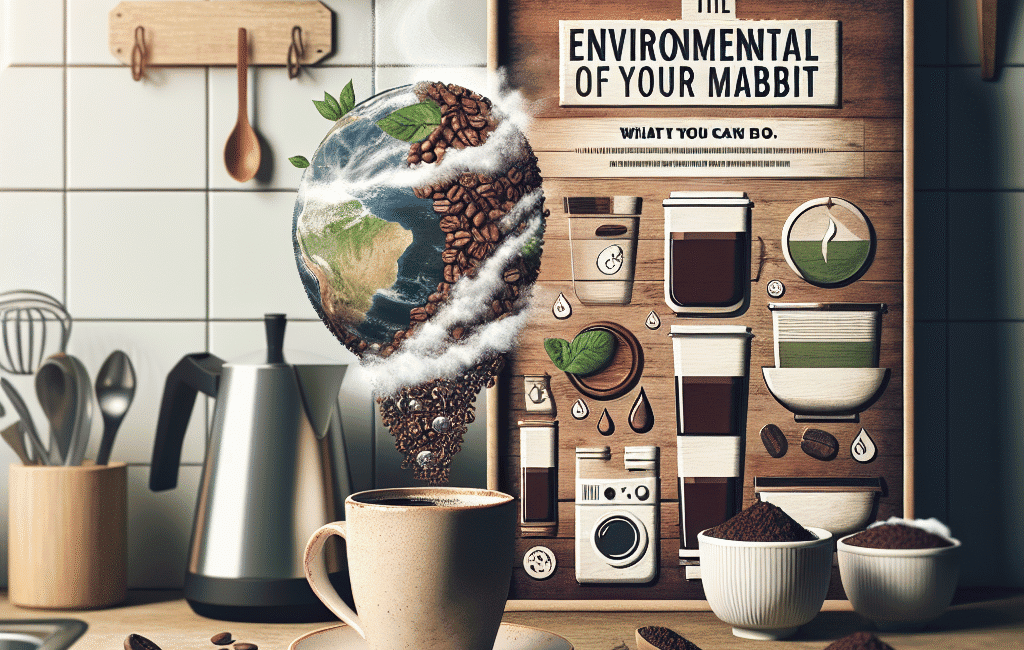
The Environmental Impact of Your Coffee Habit: What You Can Do
Coffee is one of the most beloved beverages in the world, with millions of people relying on it to kickstart their day. However, as we sip our morning brew, we may not be fully aware of the environmental impact our coffee habit can have. From the way coffee is grown and harvested to its journey from farm to cup, coffee production has significant implications for our planet. In this blog post, we will explore the environmental impact of coffee and provide actionable steps you can take to enjoy your daily cup while being mindful of the Earth.
The Coffee Supply Chain: A Closer Look
To understand the environmental impact of your coffee habit, it’s essential to look at the coffee supply chain:
- Growing: Coffee is primarily grown in tropical regions, often in monoculture plantations that can lead to soil degradation and loss of biodiversity.
- Processing: The processing of coffee beans can involve significant water usage and can lead to pollution if not managed properly.
- Transportation: Coffee is often transported long distances, contributing to greenhouse gas emissions from shipping and freight.
- Brewing: The way we prepare coffee, including energy use and waste from single-use cups, also has an environmental footprint.
The Environmental Impact of Coffee Production
The environmental impact of coffee is multifaceted:
Deforestation
Many coffee plantations contribute to deforestation, which can lead to habitat loss for countless species and increase carbon emissions. In regions where coffee is grown, forests are often cleared to make way for coffee farms, disrupting local ecosystems.
Water Usage
Coffee production is water-intensive. It takes about 140 liters of water to produce just one cup of coffee. This high water consumption can strain local water supplies, especially in regions already experiencing drought.
Pesticides and Chemicals
The use of pesticides and fertilizers in conventional coffee farming can lead to soil and water contamination. This not only affects the local environment but can also harm the health of farmers and communities living nearby.
Carbon Footprint
The entire coffee supply chain contributes to greenhouse gas emissions. From land use changes to transportation, coffee’s carbon footprint is significant. It is estimated that the production and transportation of coffee account for approximately 1.2 billion tons of CO2 emissions annually.
What Can You Do to Reduce Your Coffee’s Environmental Impact?
Fortunately, there are several steps you can take to enjoy coffee while minimizing your environmental impact:
1. Choose Sustainable Coffee
Look for coffee that is certified organic, Fair Trade, or Rainforest Alliance certified. These certifications ensure that the coffee is grown sustainably, with attention to environmental and social standards.
2. Support Local Roasters
Buying coffee from local roasters reduces transportation emissions and supports local economies. Plus, local roasters often have a commitment to sourcing high-quality, sustainable beans.
3. Brew at Home
Brew your coffee at home using a reusable coffee maker or French press instead of single-use pods or takeout cups. This not only reduces waste but often leads to better-tasting coffee!
4. Reduce Waste
Carry a reusable coffee cup when you’re on the go. Many cafes offer discounts for bringing your cup, and you’ll help cut down on the plastic waste generated by disposable cups and lids.
5. Compost Coffee Grounds
Instead of throwing away used coffee grounds, consider composting them. Coffee grounds add nitrogen to your compost and can also be used in your garden as fertilizer.
6. Educate Yourself and Others
Stay informed about the environmental impacts of coffee and share your knowledge with friends and family. The more people who understand the issues, the greater the collective impact we can have.
7. Support Coffee Farms that Practice Agroforestry
Agroforestry is a sustainable land-use practice that integrates trees with crops, including coffee. Supporting farms that practice agroforestry helps preserve biodiversity and maintain healthy ecosystems.
8. Be Mindful of Water Usage
Be conscious of how much water you use in brewing coffee. Consider using a coffee maker that uses less water or brewing methods like the pour-over technique, which can be more efficient.
Conclusion
Your daily coffee ritual doesn’t have to come at the cost of the environment. By making informed choices and adopting sustainable practices, you can enjoy your coffee while also protecting the planet. Each small change we make can collectively lead to significant positive impacts for the environment. So next time you reach for that cup of joe, remember that you have the power to make a difference!


